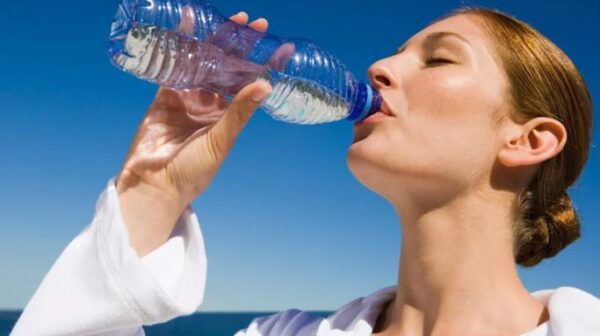Spironolactone is a medication primarily used as a diuretic, which means it helps your body expel excess fluid. It is commonly prescribed for conditions such as heart failure, hypertension, and certain cases of edema. Spironolactone is also widely used to treat hormonal imbalances, such as those seen in polycystic ovary syndrome (PCOS) and certain types of acne. Unlike other diuretics, spironolactone is potassium-sparing, which means it helps the body retain potassium while excreting sodium and water.
Hydration is a critical aspect of health for everyone, but it becomes particularly important when taking diuretics like spironolactone. While these medications are effective at removing excess fluid from the body, they can also lead to dehydration if not properly managed. This is because as water is expelled, the delicate balance of electrolytes can be disturbed, potentially leading to complications if fluid intake isn’t adequately adjusted.
For patients on spironolactone, understanding how much water to drink each day is essential. The goal is to maintain adequate hydration without overloading the body with water, which can dilute essential electrolytes and cause other health issues. The right balance will depend on several factors, including the dosage of spironolactone, the individual’s overall health, their lifestyle, and even the climate they live in. We will guide you through determining your specific hydration needs while taking spironolactone, ensuring you can manage your medication effectively while staying healthy and hydrated. Let’s see how to stay hydrated on spironolactone.
Understanding Spironolactone and Its Effects on Hydration

Spironolactone functions differently from other diuretics due to its potassium-sparing properties. This unique feature affects how the medication influences hydration and electrolyte balance in the body. Understanding these effects is crucial for anyone taking spironolactone to manage their hydration appropriately.
How Spironolactone Affects the Body?
Spironolactone blocks the action of aldosterone, a hormone that promotes sodium and water retention while excreting potassium. By antagonizing aldosterone, spironolactone encourages the body to expel sodium and water, reducing fluid buildup but sparing potassium. This can significantly alter hydration dynamics, as the reduction in body fluid needs to be carefully managed to prevent dehydration.
Impact on Hydration
While spironolactone helps reduce excess fluid, it can inadvertently lead to a state of dehydration if water intake is not adjusted accordingly. The loss of sodium and water, while retaining potassium, means that users must carefully monitor their water intake to ensure they are not losing too much fluid. This balancing act is vital to prevent the common side effects associated with dehydration, such as dizziness, fatigue, and low blood pressure.
Considerations for Electrolyte Balance
The potassium-sparing effect of spironolactone also necessitates careful monitoring of potassium levels. While it is beneficial for preventing the potassium loss seen with other diuretics, it can lead to hyperkalemia (high potassium levels), particularly if the diet is rich in potassium or if additional potassium supplements are taken. Patients on spironolactone should have their potassium levels regularly checked and adjust their diet as recommended by a healthcare provider.
In summary, spironolactone’s impact on fluid and electrolyte balance is significant. Patients need to be aware of the signs of both dehydration and hyperkalemia and should adjust their fluid intake based on ongoing monitoring and advice from their healthcare provider. This careful management ensures that the therapeutic benefits of spironolactone are achieved without adverse effects on hydration and overall health.
Determining Your Hydration Needs on Spironolactone
When taking spironolactone, it’s crucial to tailor your hydration practices to accommodate the unique effects this medication has on your body. Since spironolactone promotes the excretion of water and sodium while retaining potassium, individuals need to find a hydration balance that prevents dehydration without exacerbating the risk of hyperkalemia.

Here’s how to determine your specific hydration needs while on this medication:
Assessing Individual Factors
Your hydration needs while taking spironolactone can vary based on several factors:
- Body Weight and Composition: These play a significant role in how much water you need. A general guideline is to drink approximately 30-35 milliliters of water per kilogram of body weight, but this might need to be adjusted based on how your body responds to spironolactone.
- Overall Health: Conditions such as kidney function, heart disease, or other underlying issues can influence how much fluid your body can safely handle.
- Activity Level: More active individuals typically need more fluids to compensate for increased water loss through sweat.
- Environmental Conditions: Hot or humid weather increases sweat production, thus increasing fluid needs. Conversely, cold weather might reduce the feeling of thirst but doesn’t necessarily lessen the body’s need for hydration.
Monitoring Fluid Balance
- Track Your Intake and Output: Keeping a daily log of how much fluid you ingest and how much you excrete can help gauge whether you are drinking enough. Pay attention to signs of dehydration as well as symptoms that might indicate excessive fluid intake.
- Urine Color and Frequency: These are immediate, practical indicators of hydration status. Urine that is consistently pale yellow suggests adequate hydration. Dark urine or an unusually low frequency of urination suggests you may need to increase your fluid intake.
- Consult Regularly with Your Healthcare Provider: Since spironolactone affects electrolyte and fluid balance, regular blood tests to monitor potassium and sodium levels, as well as kidney function, are essential. These results can help inform whether your current fluid intake is appropriate.
Adjusting Hydration Intake
- Increase Fluids Gradually: If you find that you need to increase your water intake, do so gradually to allow your body to adjust without shocking your system.
- Respond to Body Signals: Increase fluid intake if you experience symptoms of dehydration, such as dry mouth, fatigue, or lightheadedness. If you experience symptoms of overhydration, such as feeling bloated, nausea, or headaches, consider reducing your fluid intake and consult your doctor.
Determining your hydration needs while on spironolactone requires a thoughtful approach that considers multiple aspects of your health and lifestyle. Regularly consulting with your healthcare provider and monitoring your body’s responses will help ensure that your hydration levels support both your health and the effectiveness of your medication.
How Much Water Should I Drink When Taking Spironolactone?
When taking spironolactone, establishing a guideline for water intake is important to manage the diuretic effects safely while maintaining good health. The medication’s unique characteristics, especially its potassium-sparing properties, mean that hydration needs can be different from those of other diuretics.

Here’s how you can determine an appropriate level of water intake while on spironolactone:
Basic Guidelines
- General Recommendation: For most adults, the general advice of drinking eight 8-ounce glasses of water daily (about 2 liters) serves as a baseline. However, when on spironolactone, this amount might need adjustment based on several factors including health conditions, lifestyle, and specific responses to the medication.
- Personalizing Your Intake: Start with the baseline recommendation and adjust according to how your body responds. If you are experiencing signs of dehydration (such as dry skin, dizziness, or persistent thirst), you may need to increase your intake slightly. On the other hand, if you notice symptoms related to overhydration or high potassium levels, a reduction might be necessary.
Adjusting for Health and Lifestyle
- Health Conditions: Patients with conditions such as renal impairment or heart failure might need tailored fluid recommendations to avoid exacerbating these conditions. Consulting with a healthcare provider is crucial in such cases to establish a safe water intake level.
- Activity Level: If you engage in regular physical activity, especially in warm conditions, you may need to increase your water intake to compensate for the loss through sweat. An extra 12 to 16 ounces of water for every 30 minutes of exercise can be a good addition.
- Dietary Considerations: Since spironolactone is potassium-sparing, it’s important to consider your dietary potassium intake when planning your hydration strategy. High-potassium foods may not need to be restricted as severely as with other diuretics, but balancing your diet and hydration is still key.
Monitoring and Adjustment
- Regular Monitoring: Keep track of your hydration by checking your urine color and frequency. This simple method can help you adjust your intake as needed without sophisticated equipment.
- Ongoing Consultations with Your Doctor: Regular blood tests to monitor electrolyte levels and kidney function are important when you’re on spironolactone. These tests can help guide your decisions about how much water to drink each day.
The recommended water intake while on spironolactone should be personalized based on individual circumstances and adjusted regularly to respond to changes in health status, lifestyle, and climate. Maintaining open communication with your healthcare provider and paying close attention to your body’s signals will help ensure that your hydration levels are optimized for both safety and effectiveness of the treatment.
Signs of Dehydration to Watch for While Taking Spironolactone
When taking spironolactone, a medication that alters fluid and electrolyte balance, it’s particularly important to be vigilant for signs of dehydration. This potassium-sparing diuretic can increase urine output, which might lead to dehydration if not properly managed with adequate hydration.

Here are key signs and symptoms of dehydration to watch for while taking spironolactone:
Physical Symptoms of Dehydration
- Thirst: An obvious but sometimes overlooked sign. If you find yourself feeling unusually thirsty, it’s a strong indication that your body needs more fluids.
- Reduced Urine Output: Less frequent urination than usual, or noticeably small amounts of dark, concentrated urine are clear signs that your body lacks sufficient hydration.
- Dry Mouth and Dry Skin: A parched mouth and noticeably dry or flaky skin can indicate dehydration.
- Fatigue: Feeling unusually tired or lethargic without an obvious reason could be a symptom of dehydration.
- Dizziness or Lightheadedness: These symptoms, especially when standing up suddenly, can occur if your body’s fluid levels are too low.
Cognitive and Emotional Signs
- Confusion or Disorientation: Dehydration can affect your cognitive functions, leading to difficulties in thinking clearly or concentrating.
- Irritability: Experiencing mood changes such as irritability or general moodiness can also be related to dehydration.
Symptoms Specific to Spironolactone Use
- Muscle Cramps or Weakness: While spironolactone is potassium-sparing, the shift in electrolyte balance can sometimes lead to muscle issues, which might also be exacerbated by dehydration.
- Increased Heart Rate or Heart Palpitations: As dehydration lowers blood volume, it can lead to an increase in heart rate and palpitations, which should be monitored closely.
Responding to Dehydration Symptoms
- Increase Fluid Intake: If you notice signs of mild dehydration, increasing your water intake should be your first response. Sipping water slowly and steadily throughout the day can help restore hydration levels.
- Monitor Electrolyte Balance: Since spironolactone affects electrolytes, particularly potassium, it’s important to monitor these levels if you’re experiencing dehydration symptoms. Over-the-counter electrolyte solutions or tablets might be useful, but consult with your healthcare provider first.
- Seek Medical Attention: If symptoms persist despite increasing your fluid intake, or if you experience severe symptoms such as extreme dizziness, confusion, or rapid heartbeat, seek medical attention immediately. Dehydration can quickly become a serious condition requiring more than just rehydration efforts.
Being aware of these signs of dehydration and knowing how to respond is crucial for anyone taking spironolactone. Regularly consulting with a healthcare provider will ensure that any changes in symptoms are appropriately managed and that hydration levels are maintained to support your health while on this medication.
Potential Risks of Overhydration with Spironolactone
While managing dehydration is a critical concern when taking spironolactone, it is also essential to be aware of the risks associated with overhydration, particularly because spironolactone is a potassium-sparing diuretic. Overhydration, or hyponatremia, occurs when there is too much water in the body relative to the amount of sodium. This imbalance can be dangerous, and understanding how to identify and manage it is vital for patients on spironolactone.

Understanding Overhydration
- Fluid Retention: Spironolactone can cause the body to retain potassium and reduce urine output in some cases, increasing the risk of water retention if fluid intake is too high.
- Dilution of Sodium: Excessive water intake can dilute the sodium in your bloodstream, leading to hyponatremia, a condition where sodium levels become dangerously low. Symptoms can include nausea, headache, confusion, and in severe cases, seizures.
Symptoms of Overhydration to Watch For
- Feeling Nauseous or Headachy: These can be early signs of overhydration, especially if they persist without other explanations.
- Changes in Mental State: Confusion, disorientation, or difficulty concentrating can indicate serious overhydration that requires immediate medical attention.
- Swelling or Puffiness: This physical sign can occur because the body’s cells begin to swell with too much fluid.
- Decreased Urine Concentration: If your urine is consistently clear and you are urinating frequently, this might be a sign that you are drinking more water than your body can process.
Managing Fluid Intake on Spironolactone
- Monitor Fluid Consumption: Keep track of how much you drink and adjust based on activity levels and environmental factors. Avoid drinking large amounts of water in a short period.
- Watch for Signs of Electrolyte Imbalance: Regular blood tests to monitor sodium and potassium levels can help prevent complications associated with overhydration.
- Consult with Healthcare Providers: Regular check-ins with your doctor are crucial. Discuss any symptoms of overhydration and the best strategies to maintain a healthy balance of fluids.
When to Seek Medical Attention
- Prompt Medical Intervention: If you experience severe symptoms of overhydration such as confusion, seizures, or severe swelling, seek immediate medical assistance. Overhydration can be just as dangerous as dehydration and requires prompt treatment to restore electrolyte balance.
Balancing fluid intake while on spironolactone involves monitoring both underhydration and overhydration risks. Patients should maintain a careful watch on their fluid intake and electrolyte levels, adjusting as necessary to ensure their health and safety. This balanced approach will help mitigate the risks associated with spironolactone’s effects on fluid and electrolyte management.
Consulting Healthcare Providers: When to Seek Advice?

While taking spironolactone, regular communication with healthcare providers is essential to safely manage both the medication’s effects and your overall hydration. Understanding when to seek professional advice can help you avoid potential complications and optimize the therapeutic benefits of spironolactone. Here are some key scenarios and signs that indicate it’s time to consult your healthcare provider.
Routine Check-Ups
- Regular Appointments: Schedule regular check-ups with your healthcare provider to monitor the effects of spironolactone, especially how it impacts your kidney function and electrolyte levels. These visits are crucial for adjusting dosages and managing side effects.
- Blood Tests: Regular blood tests to check electrolyte levels, particularly potassium and sodium, are important since spironolactone can significantly alter these balances.
When Experiencing Symptoms
- Signs of Electrolyte Imbalance: If you experience symptoms such as muscle weakness, fatigue, severe headaches, or heart palpitations, it’s important to consult your doctor. These could indicate significant shifts in electrolyte levels.
- Changes in Hydration Status: Symptoms of dehydration (like dark urine, decreased urine output, and dizziness) or overhydration (such as swelling, headaches, or confusion) warrant a discussion with your healthcare provider to adjust your fluid intake recommendations.
Medication Side Effects
- Adverse Reactions: If you notice any unexpected side effects after starting spironolactone, such as severe gastrointestinal issues, allergic reactions, or skin rashes, contact your healthcare provider immediately.
- Ineffectiveness: If the medication does not seem to be effectively managing your condition, or if your symptoms worsen, a consultation is necessary to reassess your treatment plan.
Lifestyle Changes
- Dietary Adjustments: Changes in diet, particularly those affecting potassium and sodium intake, can impact the effectiveness and safety of spironolactone. Discuss any major dietary changes with your healthcare provider.
- Physical Activity: If you start or change your exercise routine, consult your healthcare provider to discuss how increased activity levels might affect your hydration needs and medication efficacy.
When Starting or Stopping Other Medications
- Interactions: Since spironolactone can interact with other medications, including over-the-counter drugs and supplements, it’s important to discuss any new medications with your healthcare provider to avoid potential interactions.
In Case of Emergency
- Severe Symptoms: Immediate medical attention is necessary if you experience severe symptoms such as profound confusion, seizures, or significant swelling. These symptoms can indicate dangerous complications requiring urgent care.
By maintaining an open line of communication with your healthcare provider and scheduling regular check-ups, you can safely navigate the complexities of taking spironolactone. Knowing when to seek professional advice is key to managing your health effectively while on this medication.
Related Articles:
- How Much Water Should I Drink While Taking Water Pills?
- How Much Fluid Should a Student Drink for Every Pound Lost During Exercise?
FAQs
What happens if you don’t drink enough water on spironolactone?
Not drinking enough water while on spironolactone can increase the risk of dehydration. Since spironolactone is a diuretic that promotes fluid excretion, inadequate water intake can lead to electrolyte imbalances and dehydration symptoms such as dizziness, dry mouth, and fatigue.
What should you avoid while taking spironolactone?
While taking spironolactone, it’s essential to avoid consuming high-potassium foods and supplements, as the medication can cause potassium levels to rise to potentially dangerous levels. Alcohol consumption should also be limited, as it can exacerbate certain side effects of spironolactone such as dizziness and drowsiness.
What is the best time of day to take spironolactone?
The optimal time of day to take spironolactone can vary depending on individual factors and the condition being treated. However, many healthcare providers recommend taking it in the morning to minimize disruptions to sleep caused by increased urination, a common side effect of the medication.
Does spironolactone make you urinate more?
Yes, spironolactone is a diuretic medication that increases urine production by blocking the action of aldosterone, a hormone that regulates fluid balance in the body. As a result, it is common for individuals taking spironolactone to experience increased urination as a side effect of the medication.
